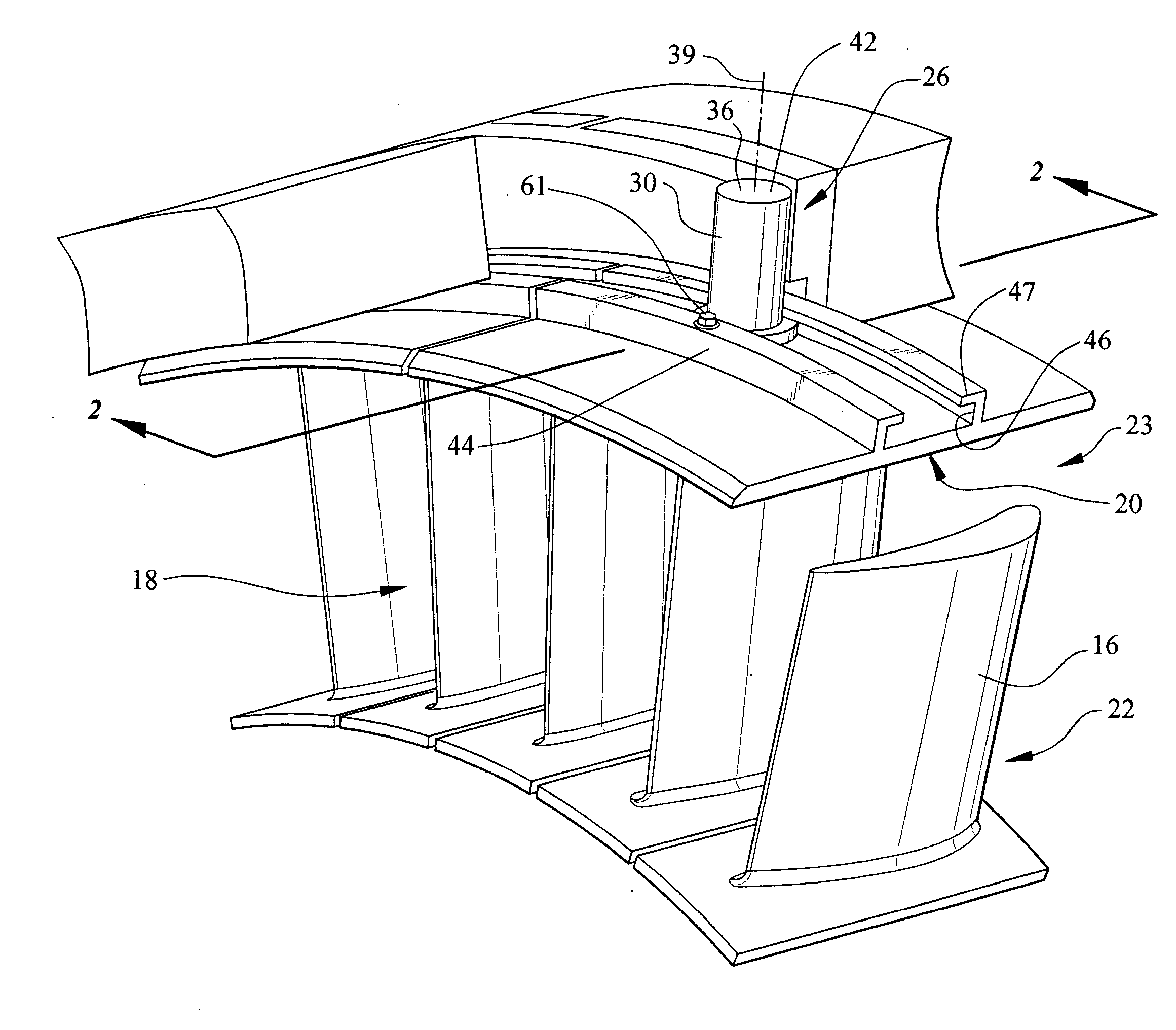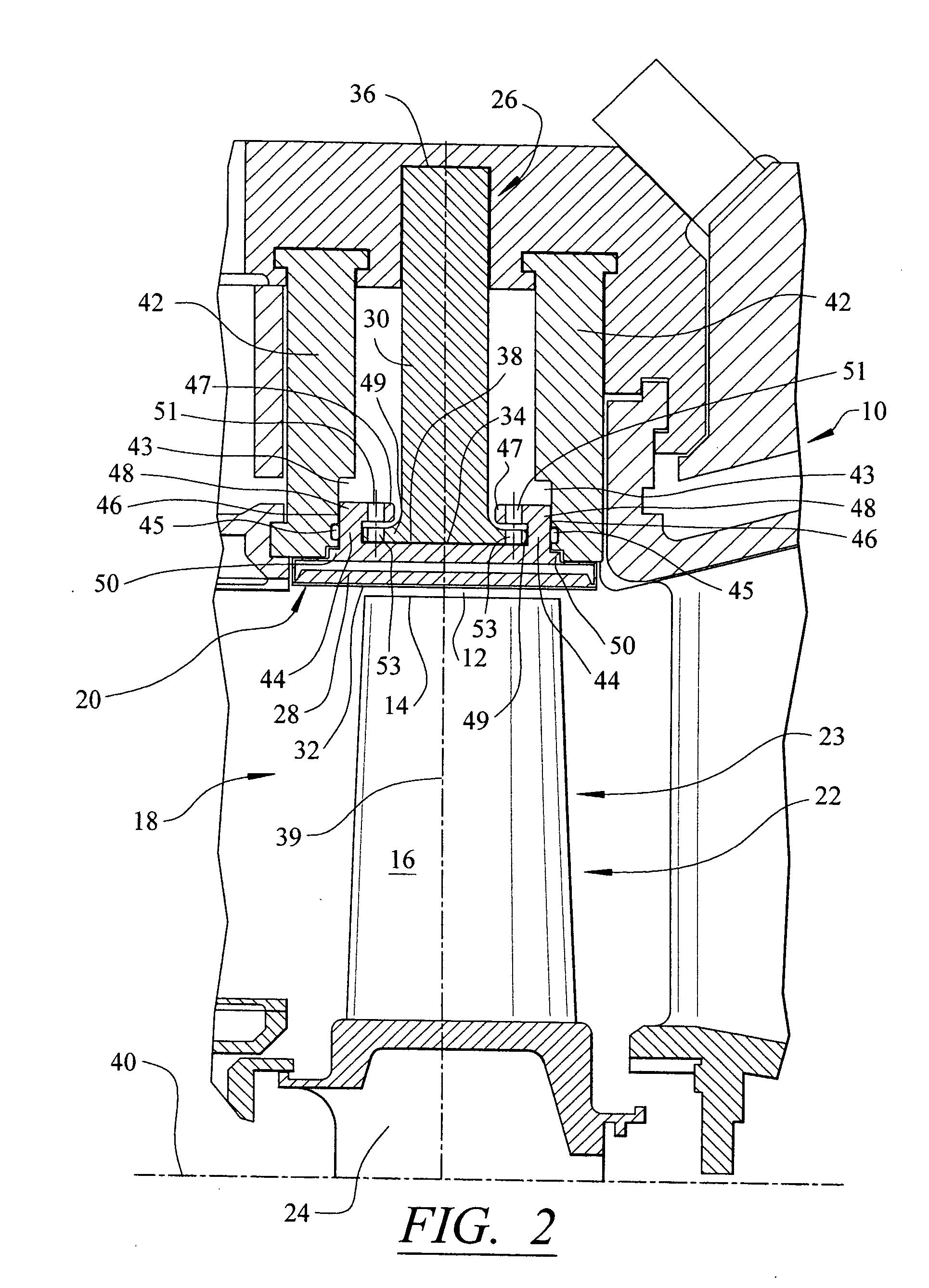Turbine engine sealing device
a sealing device and turbine engine technology, applied in the field of turbine engines, can solve the problems of inability to reduce the gap and the gap is minimal, and achieve the effects of reducing the size of the gap, reducing the leakage of air, and increasing the efficiency of the turbine engin
- Summary
- Abstract
- Description
- Claims
- Application Information
AI Technical Summary
Benefits of technology
Problems solved by technology
Method used
Image
Examples
Embodiment Construction
[0012] As shown in FIGS. 1-2, this invention is directed to a sealing system 10 for a turbine engine. In particular, the sealing system 10 is operable to reduce a gap 12 between one or more tips 14 of a turbine blade 16 in a turbine engine 18 and a surrounding shroud 20 while the turbine engine 18 is operating. The gap 12 exists in the turbine engine 18 so that the tips 14 do not contact the shroud 20. In at least one embodiment, the turbine engine 18 includes a turbine blade assembly 22 formed at least in part from a plurality of turbine blades 16 coupled to a disc 24. The blades 16 may be coupled to the disc 24 at various points along the disc 24 and may be assembled into rows, which are commonly referred to as stages 23, having adequate spacing to accommodate stationary vanes between adjacent stages of the blades 16. The stationary vanes are typically mounted to a casing of the turbine engine 18. The disc 24 may be rotatably coupled to the turbine engine 18.
[0013] The turbine en...
PUM
 Login to View More
Login to View More Abstract
Description
Claims
Application Information
 Login to View More
Login to View More - R&D
- Intellectual Property
- Life Sciences
- Materials
- Tech Scout
- Unparalleled Data Quality
- Higher Quality Content
- 60% Fewer Hallucinations
Browse by: Latest US Patents, China's latest patents, Technical Efficacy Thesaurus, Application Domain, Technology Topic, Popular Technical Reports.
© 2025 PatSnap. All rights reserved.Legal|Privacy policy|Modern Slavery Act Transparency Statement|Sitemap|About US| Contact US: help@patsnap.com



